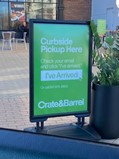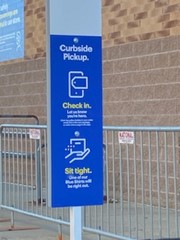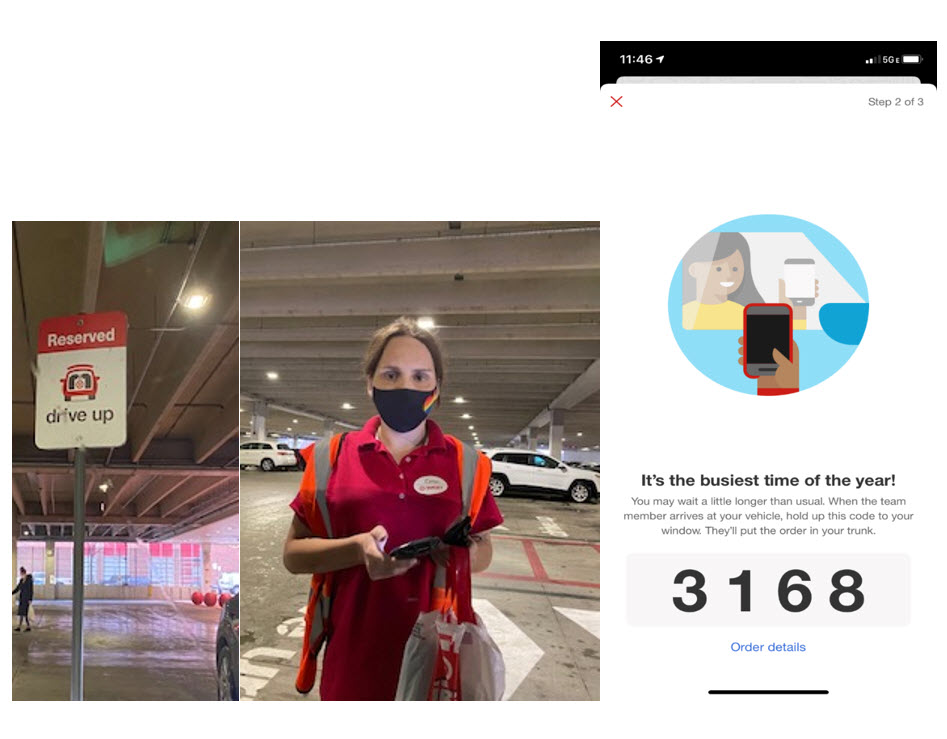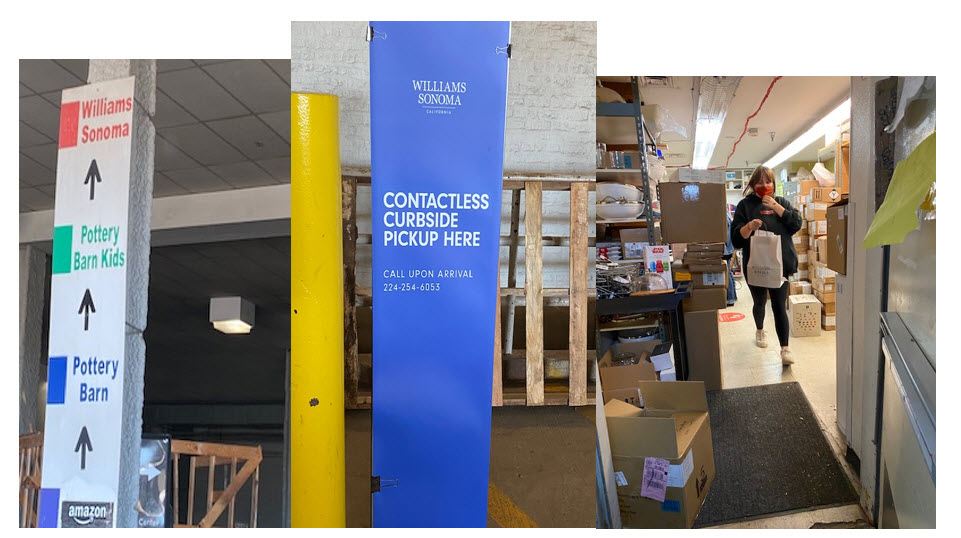According to Digital Commerce 360’s Top 500, 19–or 6.9%–retailers were offering curbside pickup pre-pandemic. By August, 121, or 43.7%, of the Top 500 were now able to accommodate curbside pickup. This is an impressive number, particularly as the increases came in a short time span.
My goal was to make 10 purchases over the Cyber 5 weekend and complete the pickups during that same time frame for the following retailers.
- Best Buy
- Crate & Barrel
- Dick’s Sporting Goods
- Gap
- Kohl’s
- Macy’s
- Nordstrom
- Target
- Ulta
- Williams-Sonoma
While seeing the numbers in aggregate is always interesting, it is the things that happened (positive and negative) as I placed my orders and picked them up using curbside pickup during the Cyber 5 weekend that are most instructive. After all, it is the holidays and in the spirit of the season, I thought I would assume the role of one of Santa’s helpers.
I was able to complete nine of these and have some advice for the retailers to ensure customers continue to adopt curbside. I have no doubt that they will, but this list of recommendations will even serve them better in that process.
The details count
As I conducted these curbside pickups in a short time frame, one of the things that stood out for me was that many retailers had well thought through all the things that would happen in this process. That began with the onsite experience and stock status as 22% of retailers (Target and Crate & Barrel) let you know specific inventory levels, moving beyond just specifying “available.” I sometimes lose confidence when they say available, and it did not take long for the first retailer, Gap, to inform me that they were out of stock. I was happy for the save the sales promotion, but knowing they are always on promotion, it really did not sweeten the disappointment.
Consistency counts
One of the frustrations that I encountered was an inconsistency in the service proposition from one month to the next. This happened at Michaels, where I have picked up at a location near my house multiple times since the pandemic began. The site shouts curbside and, as usual, I received a text saying my order was ready for pickup. But when I arrived this time and dialed the number as I have in the past, the associate let me know the service is no longer available. Customers do not want to continually be looking up your policies but instead expect that if curbside was available last month, there would be no reason to discontinue the service, particularly given the interest and the holidays. Worst-case scenario, it’s still smart to get your communication right.
If things have changed or stores are not curbside-friendly, at least extend a time-saving benefit, as Sephora did. I liked their confirmation messaging that included “upon arrival, notify a Beauty Advisor that you are picking up an online order. You will be first up to enter the store if there is already a line.”
Comprehensive communication is critical
Retailers, please start by alerting me that you have received my order. I also want to receive a ready-for-pickup message. Additionally, allow shoppers to opt in for text alerts, found on 89% of mystery shops we completed. This customer is likely to be on the road and mobile access is key. The smartest text opt-in asked if I was interested in also receiving promotional emails. This was a perfect marketing tool while you have their attention. For me, only Nordstrom was not made available, but I believe that was due to it being pre-set up under my account. Text communication was mostly used when the order was ready for pickup as the links for next steps upon arrival were often included. I did not receive ready-for-pickup texts from either Crate & Barrel or Kohl’s.
Of the nine retailers, 89% gave me the ability to opt-in to receive text communication, except Nordstrom. 22% (Ulta and Best Buy) sent me a receipt of order by email and text. And 78% sent a ready-for-pickup email and text, except for Kohl’s and Crate & Barrel.
The app execution seemed to mostly operate on one basic technology. I caution retailers about making fields that the customer completes upon arrival mandatory without offering an open-ended comment field for additional information. Giving customers an out always comes in handy. Sometimes if I couldn’t find a parking space, like at Kohl’s, there was no way for me to let them know, so I had to come up with my own workaround.
Think customer first
 Occasionally, I encountered an experience that wowed me. Crate & Barrel’s app allowed me to chat with its team. While I had trouble entering my car details, I did not reach a dead end as I did with others. Instead, I was able to communicate via chat and in short order had my products ready and waiting as I made my way through the line. It took a similar approach with signage and had its phone number posted as well. Both options almost guarantee customer satisfaction and should be adopted as mainstream.
Occasionally, I encountered an experience that wowed me. Crate & Barrel’s app allowed me to chat with its team. While I had trouble entering my car details, I did not reach a dead end as I did with others. Instead, I was able to communicate via chat and in short order had my products ready and waiting as I made my way through the line. It took a similar approach with signage and had its phone number posted as well. Both options almost guarantee customer satisfaction and should be adopted as mainstream.
Strong signage is a confidence builder
Signage is a complex issue when it comes to curbside. There are so many types of locations and each requires, just the right information. It is almost a chicken and egg situation, and you are not sure what you need until you are there and unclear where to go.
One of my initial locations for pickup was a suburban Chicago mall that I often frequent. It was a chance to pick up from three retailers. While I noticed there was mall-wide signage, it did not appear to be tied to any of the stores or communication I was receiving. So, for me and other customers, it was everyone for themselves.
I pulled up to the front door of Macys’ and saw what appeared to be a line. I figured there was no harm in letting them know I was there. I then saw that there was a green garage and that it might have parking spaces for pickup, so I figured I was getting close. In another one of the positives I experienced, its package runner did not have a car location, so they picked up the phone, with a warm approach, to check on where I was parked. They were then able to quickly find me and I was back on the road.
 Best Buy had some of the best signage and overall experience. While initially the entrance I used was not conducive to entering the line, I knew another entrance I could try. I joined the line where seven cars were still in front of me. The signage and process were well done, and the line of cars appeared to be moving. I especially liked that one of the Best Buy associates even asked to confirm that I was on the list. Ultimately, my package came out in nine minutes. It appeared to be a well-oiled machine. I also compliment them for their long hours as they were open Saturday of Thanksgiving week from 5 a.m.-11 p.m.
Best Buy had some of the best signage and overall experience. While initially the entrance I used was not conducive to entering the line, I knew another entrance I could try. I joined the line where seven cars were still in front of me. The signage and process were well done, and the line of cars appeared to be moving. I especially liked that one of the Best Buy associates even asked to confirm that I was on the list. Ultimately, my package came out in nine minutes. It appeared to be a well-oiled machine. I also compliment them for their long hours as they were open Saturday of Thanksgiving week from 5 a.m.-11 p.m.
Give shoppers guidance
Lines or parking spaces are both good options, but it is all about the information. Of course, every retailer must consider the location and not all are suited for a drive-up line. So, let’s start with parking spaces.
Dick’s Sporting Goods did a nice job on its parking spaces. Making its phone number prominent matters. Speed was a big part of its experience as well, particularly as the associate let me know they will do more than 500 pickups on Saturday post-Thanksgiving. When I went to return the purchase, I also found its urban location was also well signed.
Speed counts
On average, retailers were able to pick their products in 1 hour and 45 minutes. While that is certainly reasonable, Ulta clocked in Black Friday at eight minutes while Dick’s Sporting Goods—a relatively large store—had my purchase ready in five minutes. I could not even find it in the store that fast. While Target required a bar code and Ulta was firm in seeing my ID, most just asked for my name and laid the product in the car, adding to the efficiency.
The other place where speed matters most is once you arrive at the store. The average pickup time for my nine purchases was just under nine minutes. Any retailer who can deliver in five minutes or less, particularly during such a busy week, should be commended. Target, with such a large footprint and high volume, was especially impressive at three minutes. The location of the reserved drive-up spots and the proximity to the store certainly helped.

It even looked better as it had alerted me that it was the busiest time of the year and patience was a must. The store is big, and it still managed to make it happen.
Much of the timing is a factor of parking spaces, volume, location and internal organization. Should any one of those fall through the cracks, timing can become problematic. That was certainly the case with Williams-Sonoma. This was a challenging experience all around. Its mall location was not well-suited to handle curbside pickups. Its ready-for-pickup email only had a phone number and no link to say, “I’m here.”

When I called, the sales associate was frazzled, though managed to give me the location, which proved to be a loading dock. To be honest, it did not even feel like a safe location, especially when it was dark. When I got there, I did not even notice the Williams-Sonoma sign as it was overpowered by its sister brand Pottery Barn. I called again and gave her my name, but she was unable to find anything. I walked into the back of the storefronts where packages were scattered everywhere, so I am not surprised she could not locate it. She then came out and I gave her my order number, while I ran back to the car. Ultimately, she came out to deliver my package 20 minutes later. This was unacceptable.
One thing I have learned is that if you frequent this service like I do, the second trip is always easier. You know how to use the app, where to park or pull into the line, so the anxiety and uncertainly that are part of the initial experiences are alleviated and it is mostly smooth sailing from here on out.
Those retailers that do not perform well will be challenged to compete in today’s omnichannel environment. And some will never get a second chance. Retailers should keep in mind communication, signage, speed and consistency, factoring in all the details that make for a successful curbside holiday. We can almost guarantee that curbside will remain important in 2021, so now is the perfect time to get it right.
Favorite